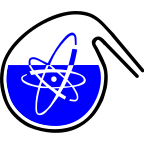Speaker
Description
Radiolanthanides are very promising for use in nuclear medicine. Due to their similar chemical properties, one and the same type of coordination compounds can find various diagnostic and therapeutic applications. Terbium has four radioisotopes with different decay properties, energies and half-lives and these can be used for noninvasive theranostic purposes. Carrier-free terbium-161 is produced via neutron irradiation of highly enriched gadolinium-160 targets in the Belgian Reactor 2 (BR2) at SCK CEN. Terbium-161 emits low-energy beta particles accompanied by gamma photons and shows similar properties to lutetium-177. Furthermore, the co-emission of Auger electrons make terbium-161 more attractive towards to a combined β
Apart from the omnipresent trivalent oxidation state, several lanthanides can occur in the divalent or tetravalent oxidation states as well. A change in valence state alters the chemical properties and therefore facilitates intragroup lanthanide separations. The hydrated terbium(III) ion has a highly positive reduction potential (E

